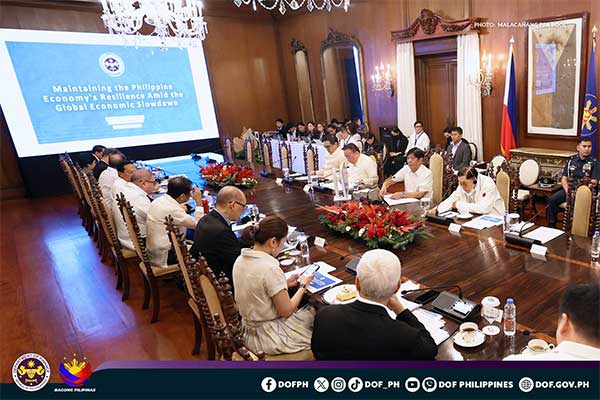
Finance Secretary Benjamin E. Diokno shared with the Malacañang press corps on November 28, 2023 the Philippine government’s strategies to sustain robust economic growth and resilience amid the global economic slowdown, following his presentation to President Ferdinand R. Marcos, Jr. in a high-level sectoral meeting on the same day.
The Philippine economy grew by 5.9 percent in the third quarter of 2023, making it one of the fastest-growing economies in Asia. Its growth for the first three quarters of the year averaged to 5.5 percent, faster than China, Indonesia, Vietnam, Malaysia, and Singapore.
On the other hand, the global outlook remains dim. According to the October 2023 World Economic Outlook (WEO) Update, the International Monetary Fund (IMF) maintained its world economic growth projection of 3.0 percent for 2023 and projected a slightly slower growth outlook of 2.9 percent in 2024.
“If you look at the bigger picture, compared with the other countries, the World Bank expects the Philippine economy to outgrow its East Asia and Pacific peers. They expect the economy to grow at 5.6 percent,” Secretary Diokno said.
The ASEAN+3 Macroeconomic Research Office (AMRO) also projects the Philippines to post the highest growth in Southeast Asia both in 2023 and 2024 at 5.9 and 6.5 percent, respectively.
“We are confident that the economy will grow by around 6 percent–––that’s the lower end of our growth target of 6 to 7 percent this year, and we will continue to grow at around 6.5 to 8 percent for the rest of President Marcos’ term,” Secretary Diokno said.
Apart from the positive outlook, the Philippines’ low external debt-to-GDP ratio is reflective of the country’s external strength.
According to Secretary Diokno, the Philippines has the lowest external debt-to-GDP ratio at 28.5 percent as of end-Q2 2023 compared to ASEAN-5 countries with available data.
This is lower than Indonesia’s almost 30 percent, Thailand’s almost 40 percent, and Malaysia’s more than 60 percent.
“This supports the view that the Philippines has a relatively strong external position as it is less vulnerable to adverse external shocks,” the Finance Chief said.
The Marcos, Jr. administration is prepared with a set of measures to combat the domestic and external risks to its growth outlook.
Secretary Diokno identified four policy thrusts to achieve a full-year growth that is closer to the low-end of the 6.0 to 7.0 percent growth target for 2023.
The government will address elevated inflation to boost private spending; rigorously implement government spending catch-up plans in the last quarter 2023 and avoid underspending in S1 2024 through efficient budget execution; implement proactive responses to external developments; and ensure the efficient implementation of recent structural reforms to boost investments.
To address inflation, the Inter-Agency Committee on Inflation and Market Outlook (IAC-IMO) will improve production and fill the domestic supply gap through timely and adequate importation based on ex-ante supply-demand analysis; closely monitor on-the-ground developments; fast track calamity response; and protect the vulnerable sectors.
To avoid underspending, the Economic Development Group (EDG), chaired by the Secretaries of the Department of Finance (DOF) and the National Economic and Development Authority (NEDA), will implement measures to improve budget utilization in line government agencies as well as government-owned and controlled corporations (GOCCs).
To ensure sustained economic growth, the Philippines will pursue the Build Better More program, prioritizing 197 infrastructure flagship projects (IFPs) with a total investment requirement of about PHP 8.7 trillion.
Finally, to navigate external headwinds, the government shall continue to develop policies to support the Philippines’ export sector; facilitate trade diversification to expand opportunities for exporters; and continue the implementation of credit programs designed to provide loans for marginalized farmers and fisherfolk and micro and small enterprises (MSMEs).





















